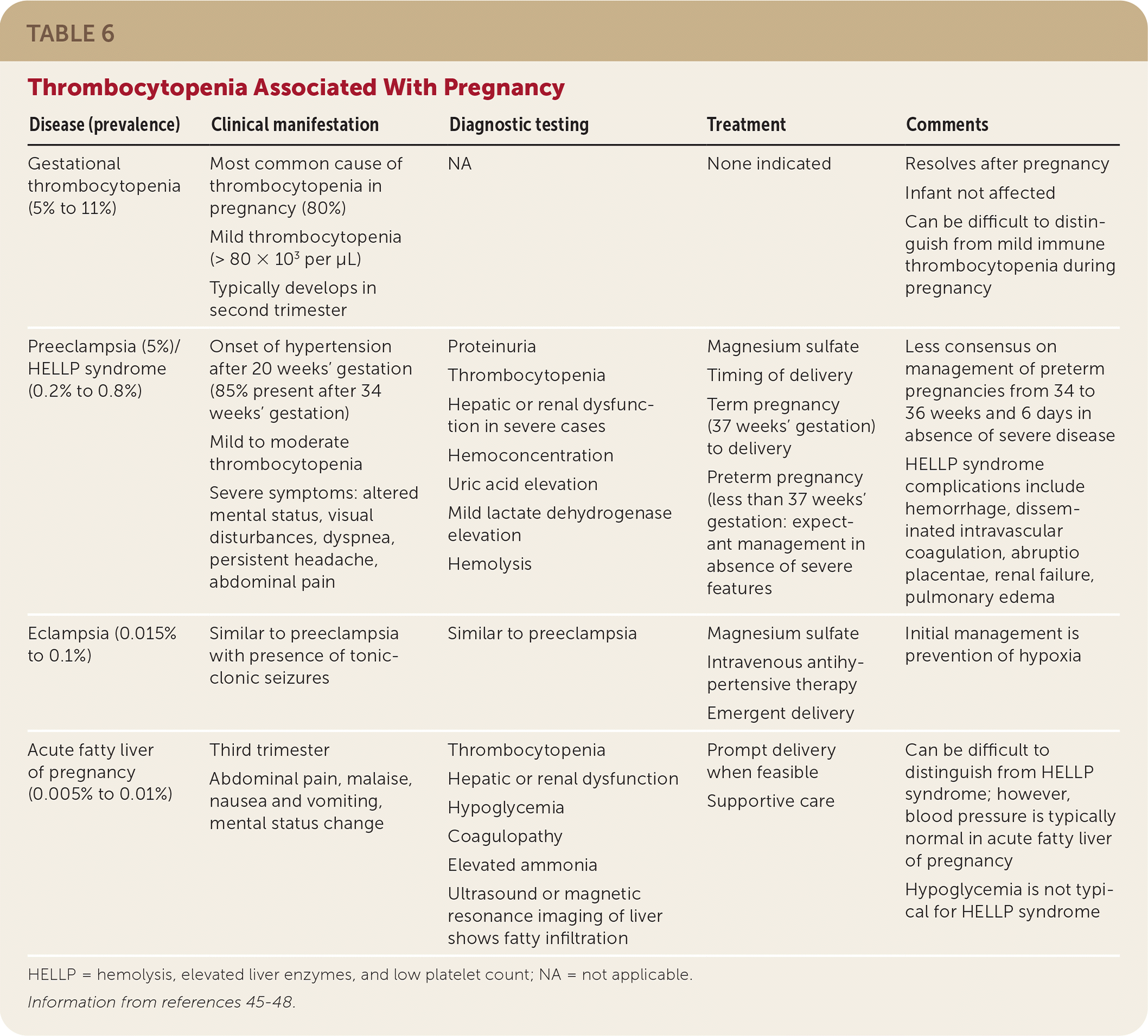
| Disease (prevalence) | Clinical manifestation | Diagnostic testing | Treatment | Comments |
|---|---|---|---|---|
| Gestational thrombocytopenia (5% to 11%) | Most common cause of thrombocytopenia in pregnancy (80%) Mild thrombocytopenia (> 80 × 103 per μL) Typically develops in second trimester | NA | None indicated | Resolves after pregnancy Infant not affected Can be difficult to distinguish from mild immune thrombocytopenia during pregnancy |
| Preeclampsia (5%)/HELLP syndrome (0.2% to 0.8%) | Onset of hypertension after 20 weeks' gestation (85% present after 34 weeks' gestation) Mild to moderate thrombocytopenia Severe symptoms: altered mental status, visual disturbances, dyspnea, persistent headache, abdominal pain | Proteinuria Thrombocytopenia Hepatic or renal dysfunction in severe cases Hemoconcentration Uric acid elevation Mild lactate dehydrogenase elevation Hemolysis | Magnesium sulfate Timing of delivery Term pregnancy (37 weeks' gestation) to delivery Preterm pregnancy (less than 37 weeks' gestation: expectant management in absence of severe features | Less consensus on management of preterm pregnancies from 34 to 36 weeks and 6 days in absence of severe disease HELLP syndrome complications include hemorrhage, disseminated intravascular coagulation, abruptio placentae, renal failure, pulmonary edema |
| Eclampsia (0.015% to 0.1%) | Similar to preeclampsia with presence of tonic-clonic seizures | Similar to preeclampsia | Magnesium sulfate Intravenous antihypertensive therapy Emergent delivery | Initial management is prevention of hypoxia |
| Acute fatty liver of pregnancy (0.005% to 0.01%) | Third trimester Abdominal pain, malaise, nausea and vomiting, mental status change | Thrombocytopenia Hepatic or renal dysfunction Hypoglycemia Coagulopathy Elevated ammonia Ultrasound or magnetic resonance imaging of liver shows fatty infiltration | Prompt delivery when feasible Supportive care | Can be difficult to distinguish from HELLP syndrome; however, blood pressure is typically normal in acute fatty liver of pregnancy Hypoglycemia is not typical for HELLP syndrome |